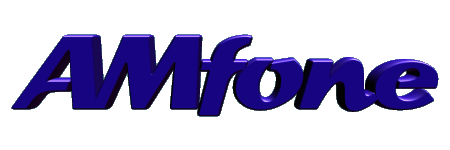Steve,
I posted some info on these transformers below from the CE Email Reflector.
Sooo, you only need 1 good transformer to run AM! For SSB you need two, and they need to be a matched set (or so it seems).
In the reflector archives you will find many posts by me between 2003 and 2006 concerning the 20A and my QRO modifications.
Jim
WD5JKO
http://mailman.qth.net/pipermail/central-electronics/May 2005 article by me:
http://mailman.qth.net/pipermail/central-electronics/2004-May/000320.htmlHi Group,
I been pretty silent lately, but I have been tinkering on various QRO 20A
strategies looking for the best approach, and hopefully the simplest
approach at the same time. This is still ongoing. Currently using a single
neutralized EL-34 for 160-40 meter operation at about 7 - 10 watts AM
carrier output on my latest approach, QRO 20A #3. Gearing up to try a
7984....
I am writing this email about the audio modulation transformers TR-2, and
TR-3. My current rig with the EL-34 works perfect on AM (10 watts carrier
100% modulated or 40 watts pep). AM operation only uses TR-2 (the one that
also drives the rear RCA jack). When I switch to SSB, I can get a excellent
carrier null, and the single tone (1 Khz) input makes a pure DC carrier 1
Khz offset so long as the power stays below 5 watts. Above that I lose the
adjacent SB rejection, and see significant ripple on the carrier wave that
increases with the RF output.
Looking at the audio feeding the balanced modulator (scope), I see that the
output from TR-3 becomes increasingly asymmetrical as the SB rejection
becomes increasingly compromised. I replaced the balanced modulator diodes
to see if they were acting strange, but no change. I looked at the 12AT7 (b)
where pin 6 (plate1) feeds TR-2, and that was clean. Looking at pin 1
(plate2) it distorts at higher levels feeding TR-3. If I look at the grids
of same tube, the signals remain clean at all signal levels corresponding
from zero to maximum pep rf output. The distortion, and hence sb rejection
problem seems to occur at the plate at pin 1 of 12AT7 (b). Changing the
12AT7 (b) did not help. Initial thinking here is that I have a bad TR-3. But
wait until I present the data from 10 transformers.
The data:
>From 20A QRO #1 (good transformers):
TR-2 1.36K ohm, 10.82 henry
TR-3 1.29K ohm, 11.00 henry
>From 20A QRO #2 (good transformers):
TR-2 1.57K ohm, > 20 henry (meter cannot measure above 20h)
TR-3 1.37K ohm, 19.4 henry
>From 20A QRO #3 (suspect TR-3 as bad):
TR-2 1.65K ohm, 12.7 henry
TR-3 1.23K ohm, 12.3 henry *** BAD?

>From 20A with meter on front (unknown transformers):
TR-2 1.26K ohm, 10.3 henry
TR-3 1.25K ohm, 11.2 henry
>From 20A bought from Kimberly (1 open transformer):
TR-2 1.3K ohm, 13.4 henry
TR-3 open primary
Transformer from Bob W1CNY:
TR-? 1.3K ohm, 15.5 henry
**Measuring the primary inductance with my Beckman hand held meter
Based on the data, I'd say that TR-3 in 20A QRO #3 is fine. Listening to
the rig with my station monitor and using voice it sounds very peculiar,
something like when a ham has a RF flashover during voice peaks. Maybe the
transformer is OK, but at higher signal levels it arc's turn to turn
internally??
The data suggests quite a bit of variability in both ohms, and primary
inductance. The transformers do seem to be matched sets however. Does
anybody know about this, or have experience in this area of the 20A? Some of
the transformers (bare aluminum cover) have part number 27A0-79-3 on them,
and others (gray colored) have no identifying part number.
My next move is to replace the suspect TR-3 with TR-2 from from the
"Kimberly" 20A donor since it is close in primary inductance.
EDIT: The problem turned out to be that the two 9 Mhz RF coils in the 90 degree RF phase shifter were too far apart. This one was a kit, and there was an extra hole that the builder mistakenly used. Moving the one coil, and re-aligning, the bad behavior went away.
Regards,
Jim Candela
WD5JKO



